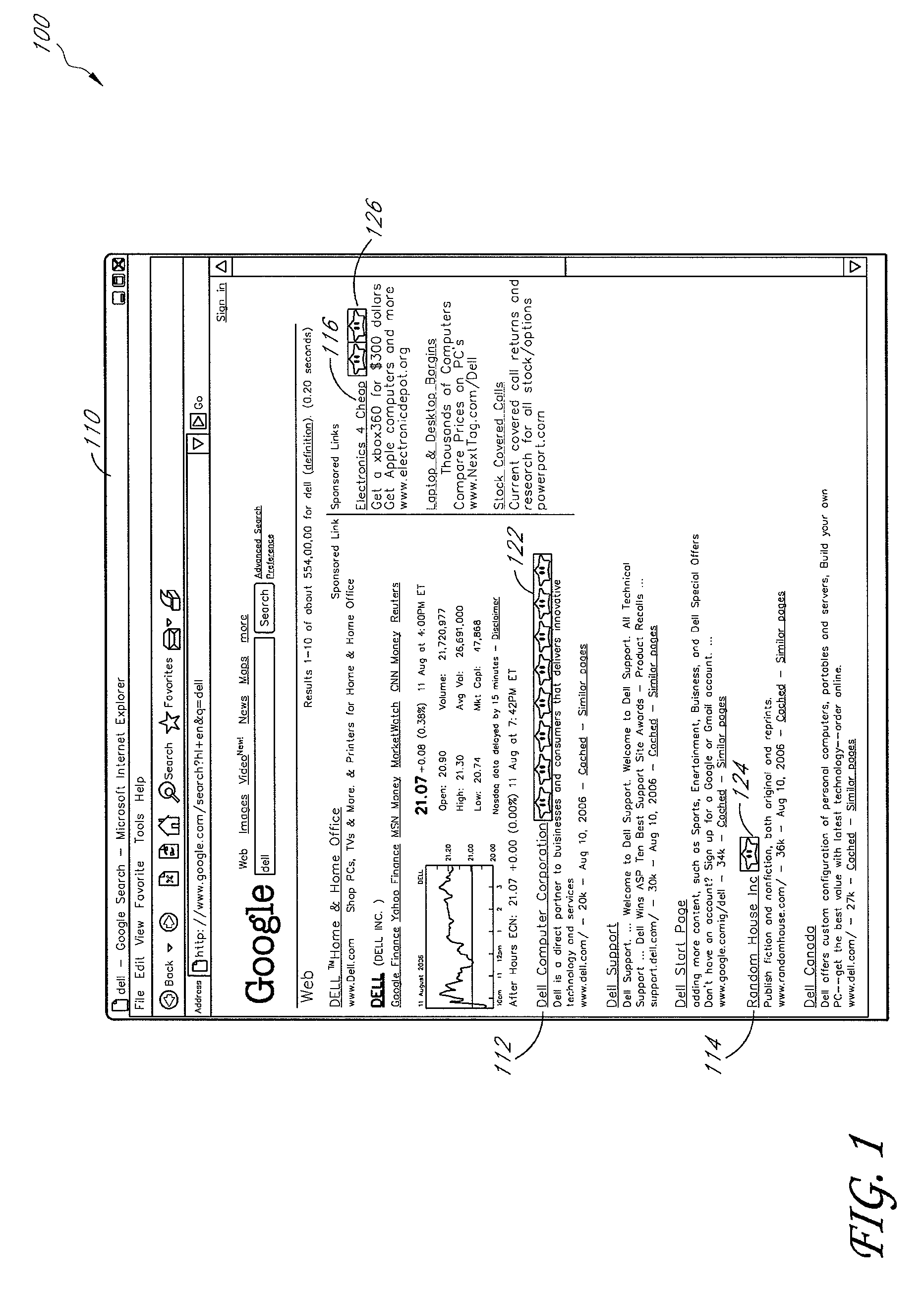Systems and methods of task cues
a task and cue technology, applied in the field of cues, can solve the problems of difficult for an advertiser to reach a potential customer at the right time, many problems in computer and internet-based advertising, and many problems, so as to achieve the effect of decreasing the chan
- Summary
- Abstract
- Description
- Claims
- Application Information
AI Technical Summary
Benefits of technology
Problems solved by technology
Method used
Image
Examples
Embodiment Construction
[0035]1. Process Overview
[0036]FIG. 1 shows a simplified screenshot of a web search page in accordance with one embodiment. In the illustrated embodiment, a user desktop 100 displays a web search page within a web browser 110. Specifically, as illustrated, the browser 110 displays a search engine results page generated by the Google™ search engine. The search engine results page contains entries related to the search term “Dell”. For example, the results include the textual tag “Dell Computer Corporation”112 as a hyperlink directing a user to the Dell™ Computer Corporation website.
[0037]A task cue 122 is displayed next to this hyperlink. In one embodiment, the task cue 122 comprises an image. In the illustrated example, eight stars are shown. In other embodiments, other images may be displayed to represent task cues. In one embodiment, the task cue 122 is generated based upon the occurrence of the textual tag “Dell Computer Corporation”112. For example, the task cue 122 can be gener...
PUM
 Login to View More
Login to View More Abstract
Description
Claims
Application Information
 Login to View More
Login to View More - R&D
- Intellectual Property
- Life Sciences
- Materials
- Tech Scout
- Unparalleled Data Quality
- Higher Quality Content
- 60% Fewer Hallucinations
Browse by: Latest US Patents, China's latest patents, Technical Efficacy Thesaurus, Application Domain, Technology Topic, Popular Technical Reports.
© 2025 PatSnap. All rights reserved.Legal|Privacy policy|Modern Slavery Act Transparency Statement|Sitemap|About US| Contact US: help@patsnap.com



